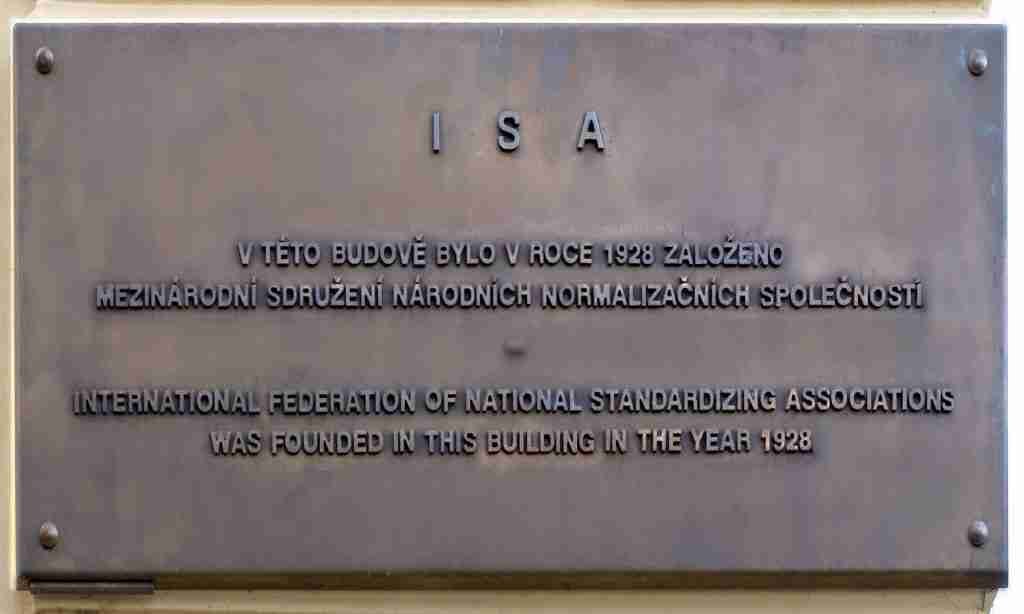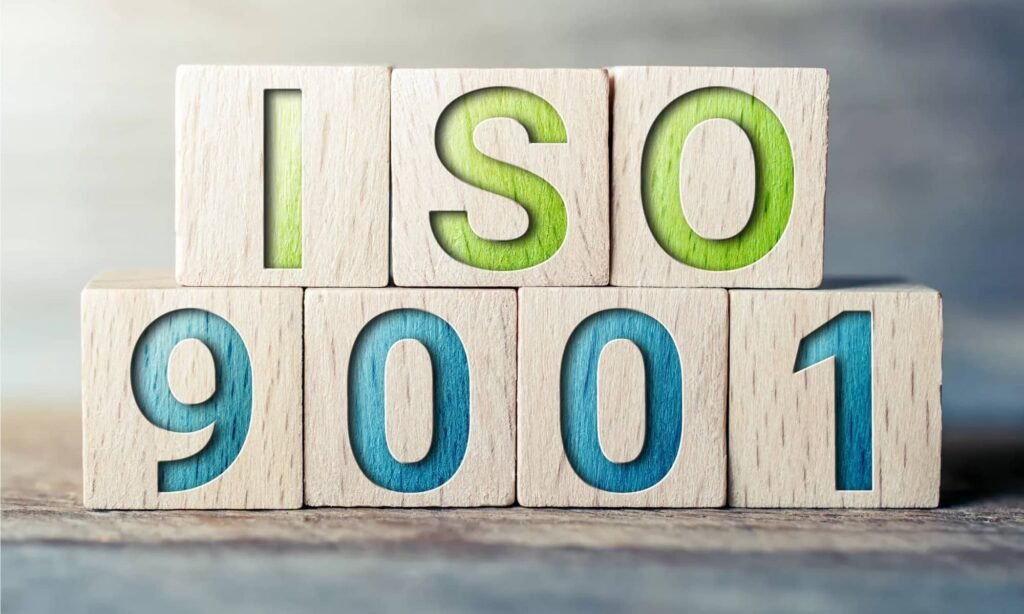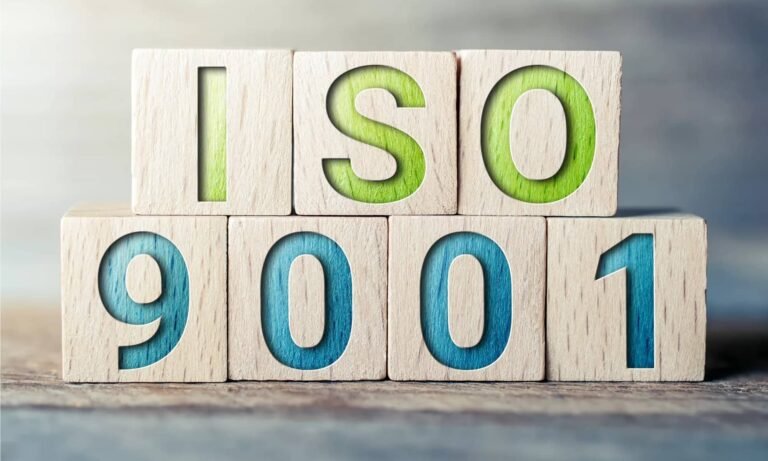ISO, DIN, EN, and EFQM promote quality, safety, and efficiency through standardization and continuous improvement. Their frameworks ensure products meet specific standards, helping businesses reduce costs, improve productivity, and access global markets. Clear guidelines and benchmarks build consumer trust, foster innovation, and support best practices. Adherence enhances compliance, minimizes risks, and drives sustainable growth. As industries evolve, these standards underpin technological advancement and help organizations maintain excellence.
ISA -> ISO

The International Organization for Standardization (ISO) began in 1928 as the International Federation of the National Standardizing Associations (ISA). After a brief hiatus in 1942, it re-emerged in 1947 as ISO with 25 founding countries. ISO oversees national standards to unify global trade requirements. It is an independent, non-governmental organization that develops and publishes standards to ensure the quality, safety, efficiency, and interoperability of products, services, and systems worldwide.
ISO plays a pivotal role in the global economy by providing a framework for creating and implementing international standards. These standards touch nearly every aspect of daily life, from ensuring the quality of products we use to the safety of the environments in which we work. Organizations that adopt ISO standards demonstrate their commitment to best practices and continuous improvement, benefiting not only themselves but also their customers and society as a whole.
“ISO standards are the silent guarantors of quality, safety, and efficiency in our global marketplace, setting the benchmark for what is trusted and reliable.”
– Eric Roth
The use of standardization systems isn’t new. For centuries the world has been using the taxonomic structures created by Carl Linnaeus in the 1700s. Considered the father of modern taxonomy, Linnaeus developed the binomial nomenclature convention for naming plants with a genus and species name.
This allows scientists from across the globe to communicate more effectively with a universally accepted system. The DIN, ISO, and EN standardizations accomplish the same goal in a broad spectrum of industries.

ISO Key Aspects
History And Structure
- Founded: ISO was officially established on February 23, 1947.
- Headquarters: Geneva, Switzerland → The Swiss member body is the Swiss Association for Standardization (SNV)
- Members: ISO has 168 national standard bodies as members, representing countries from around the globe. Each member represents the ISO in their own country and contributes to the development of international standards.
- Structure: ISO operates through a network of technical committees, subcommittees, and working groups composed of experts from various industries, governments, and other stakeholders.
Standards Development Process
- Proposal Stage: A new standard starts with a proposal, often by industry, government bodies, or national standards organizations.
- Committee Stage: The proposal is then developed by technical committees of experts, who draft the standard.
- Public Review and Voting: The draft standard is circulated for comments and voting among ISO members.
- Finalization: After revisions, the final standard is published.
- Review: Standards are reviewed every 5 years to ensure they remain relevant and up-to-date.
Purpose And Impact
- Global Uniformity: ISO standards ensure that products and services are safe, reliable, and of good quality, facilitating international trade and cooperation.
- Economic Impact: Standards help businesses reduce costs, improve productivity, and access international markets.
- Innovation: ISO standards encourage innovation by providing a clear framework for new technologies and processes.
- Consumer Trust: ISO certification helps build consumer confidence by ensuring that products meet internationally recognized benchmarks.
Popular ISO Standards
- ISO 9001 (Quality Management Systems): Ensures that organizations meet customer and regulatory requirements consistently.
- ISO 14001 (Environmental Management Systems): Helps organizations improve their environmental performance through efficient resource use and waste reduction.
- ISO 22000 (Food Safety Management Systems): Ensures food safety throughout the supply chain by identifying and controlling food safety hazards, enhancing transparency, and fostering consumer trust.
- ISO 27001 (Information Security Management Systems): Provides a framework for managing sensitive company information to keep it secure.
- ISO 45001 (Occupational Health and Safety): Focuses on improving employee safety, reducing workplace risks, and creating better, safer working conditions.
- ISO 50001 (Energy Management Systems): Helps organizations use energy more efficiently, reducing greenhouse gas emissions and energy costs.
| ISO Standard | Focus Area | Key Benefits | Applicable Industries |
|---|---|---|---|
| ISO 9001 | Quality Management | Consistent product/service quality, customer satisfaction, regulatory compliance | All industries |
| ISO 14001 | Environmental Management | Reduced environmental impact, efficient resource use, improved sustainability | Manufacturing, energy, construction |
| ISO 22000 | Food Safety Management | Safe food production, hazard control, consumer trust | Food production, processing, distribution |
| ISO 27001 | Information Security | Protection of sensitive data, risk management, regulatory compliance | IT, finance, healthcare |
| ISO 45001 | Occupational Health & Safety | Safer workplaces, reduced incidents, legal compliance | Construction, manufacturing, logistics |
| ISO 50001 | Energy Management | Lower energy costs, reduced emissions, improved energy efficiency | Utilities, manufacturing, transportation |
Certification
- Voluntary: ISO itself does not certify companies or products. Instead, external certification bodies conduct assessments to determine if an organization meets the requirements of a specific ISO standard.
- Process: The certification process typically involves a detailed audit of the organization’s systems and processes to ensure compliance with the standard.
- Benefits: Achieving ISO certification can enhance a company’s reputation, open up new market opportunities, and improve internal processes.
ISO 9001
ISO 9001 is an internationally recognized standard for quality management systems. It helps organizations improve their overall performance and provides a solid foundation for sustainable development initiatives.
A core element of ISO 9001 is the seven principles of quality management, which serve as a guiding framework to enhance customer satisfaction, optimize processes, and promote continuous improvement.
DIN
The Deutsches Institut für Normung (DIN), which translates to the German Institute for Standardization in English, is the national organization responsible for developing and publishing standards in Germany. Established in 1917, DIN has played a crucial role in setting technical standards across various industries, ranging from manufacturing and engineering to healthcare and consumer products.
Read More
DIN Key Functions And Roles
- Standardization: DIN develops standards that ensure quality, safety, and efficiency in products, services, and processes. These standards are created through consensus among experts, stakeholders, and industry representatives. Once established, these standards are voluntary but are widely adopted across German and international markets.
- International Cooperation: DIN represents Germany in international standardization bodies such as the International Organization for Standardization (ISO) and the International Electrotechnical Commission (IEC). This means that many DIN standards align with or influence international standards, promoting global trade and interoperability.
- National Standards Body: As the official standards body for Germany, DIN coordinates with various stakeholders, including government agencies, industries, and research institutions, to develop and implement national standards. These standards are crucial for ensuring compatibility and safety in the German market.
- DIN Standards: DIN standards cover a wide range of topics, from basic industrial measurements to complex technologies. Some well-known standards include DIN 476, which influenced the ISO 216 paper size standard (e.g., A4 paper), and DIN 933, which specifies the dimensions for hexagon head bolts.
- DIN EN and DIN ISO: When a DIN standard is harmonized with a European (EN) or international (ISO) standard, it is prefixed with DIN EN or DIN ISO, respectively. This indicates that the standard is recognized beyond Germany and adheres to a broader consensus.
Impact
DIN standards are highly regarded for their precision and reliability. They play a critical role in ensuring product safety, facilitating trade, and enhancing the efficiency of industries in Germany and abroad. Compliance with DIN standards often signifies quality and adherence to best practices in engineering and manufacturing. Overall, DIN is a key player in the global standardization landscape, with a significant influence on both national and international levels.
EN
European Standards (EN) are technical standards developed by the European Committee for Standardization (CEN), the European Committee for Electrotechnical Standardization (CENELEC), and the European Telecommunications Standards Institute (ETSI). These standards are designed to ensure uniformity, safety, and interoperability across products, services, and processes within the European Single Market.
Read More
Key Aspects Of EN
- Harmonization Across Europe: EN standards are developed with the goal of harmonizing technical specifications across European countries. This harmonization is crucial for facilitating trade within the European Union (EU) and the European Economic Area (EEA) by removing technical barriers.
- Development Process: EN standards are created through a consensus-driven process involving representatives from industry, consumer groups, governments, and other stakeholders from EU member states. This collaborative approach ensures that the standards are widely accepted and applicable across different sectors.
- Mandatory vs. Voluntary: While EN standards are generally voluntary, they often become mandatory when referenced in European legislation, particularly in areas like health, safety, and environmental protection. Products that comply with these standards can often carry the “CE” marking, indicating conformity with EU regulations.
- Adoption and Implementation: Once an EN standard is approved, all CEN and CENELEC member countries are required to adopt it as a national standard. This means that a single EN standard replaces any conflicting national standards in the member countries, creating a uniform standard across Europe.
- Types of Standards: EN standards cover a wide range of areas, including construction, machinery, electronics, healthcare, and consumer products. Some well-known examples include EN 71 (Safety of Toys), EN 149 (Respiratory Protective Devices), and EN 60598 (Luminaires).
- Relationship with International Standards: Many EN standards are based on or aligned with international standards, particularly those developed by the International Organization for Standardization (ISO) and the International Electrotechnical Commission (IEC). When an EN standard is based on an international standard, it is often identified as EN ISO or EN IEC.
- Legal Framework: EN standards often support the implementation of EU directives and regulations. For example, the Machinery Directive, the Low Voltage Directive, and the Medical Devices Regulation all refer to specific EN standards to define compliance criteria.
Importance Of EN
- Market Access: Compliance with EN standards is often a prerequisite for entering the European market, making these standards critical for companies aiming to do business in the EU.
- Consumer Protection: EN standards contribute to consumer safety by setting high-quality and safety requirements for products sold within Europe.
- Competitiveness: By adhering to uniform standards, companies can reduce production costs and increase efficiency, enhancing their competitiveness in the global market.
- Environmental and Social Responsibility: Many EN standards focus on sustainability and social responsibility, reflecting the EU’s commitment to addressing environmental and societal challenges.
EN Standards And National Standards
When an EN standard is adopted by a national standards body (such as DIN in Germany, BSI in the UK, or AFNOR in France), it usually takes the form of a national standard prefixed by the country’s standard identifier (e.g., DIN EN, BS EN, NF EN). The original national standard is withdrawn if it conflicts with the new EN standard.
In summary, European Standards (EN) play a pivotal role in the integration of European markets, the safety and quality of products, and the promotion of innovation and competitiveness within Europe and beyond.
EFQM
The European Foundation for Quality Management (EFQM) is a framework designed to help organizations enhance performance. Established in 1988, EFQM promotes sustainable excellence through principles like continuous improvement and stakeholder satisfaction. It is widely recognized in Europe and beyond as a valuable tool for improving quality and efficiency.
The EFQM model comprises components such as leadership, strategy, people, partnerships, and processes, all of which are interconnected. These elements shape organizational culture, foster collaboration, and improve operational efficiency. Strengthening these areas often leads to sustained performance and higher customer satisfaction.
Implementing the EFQM model offers benefits including a structured framework for strategic planning, innovation, and better decision-making. Organizations using this model often achieve improved resource alignment, stronger stakeholder engagement, and enhanced social responsibility for a more adaptable business approach.
Ninja Services
Pragmatic, professional engagement rooted in global experience – Ninja Services to navigate complexity, optimize operations and drive results through Value Creation.
Eric’s My Background includes well-developed, solid Core Competencies and he offers tailor-made solutions for both temporary assignments and permanent roles and is available for global travel on a flexible basis.
Contact Eric today for effective support in navigating challenges and driving success through Value Creation.
What’s More
The posts in My Blog feature reflective, story-driven pieces rooted in personal and societal insights.
The topics in My Interests explore abstract, philosophical ideas and their cultural and societal impact.
👁️ 6,120 Views

















